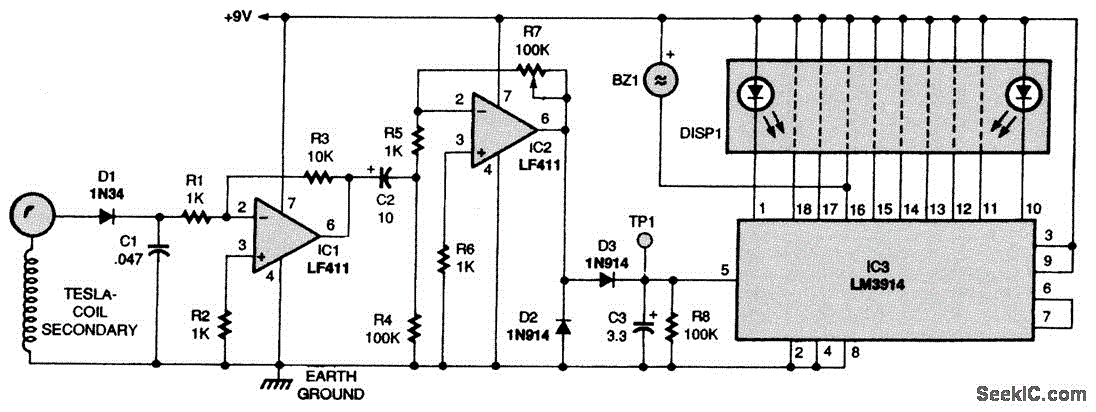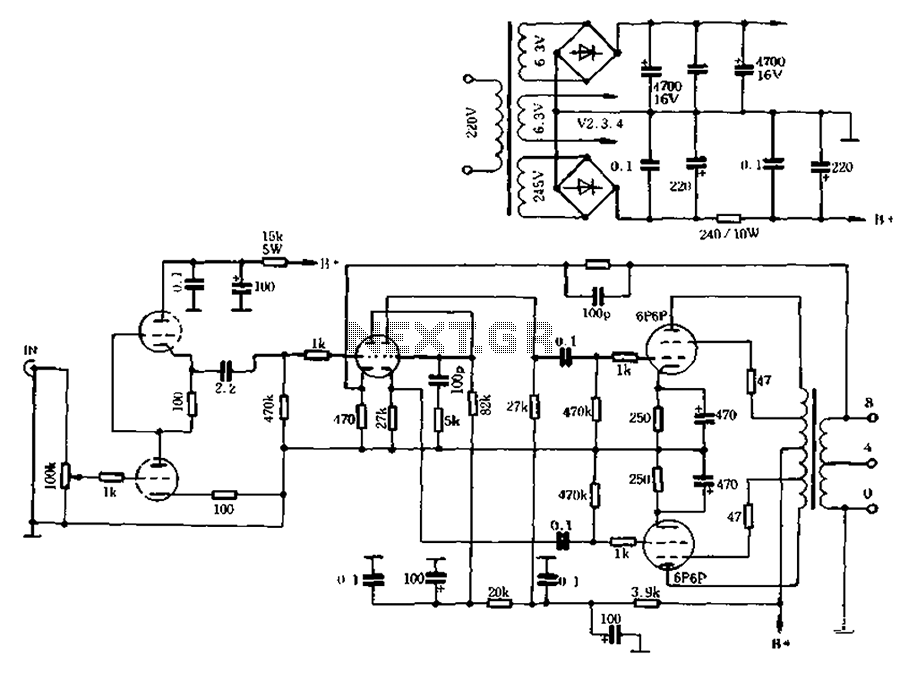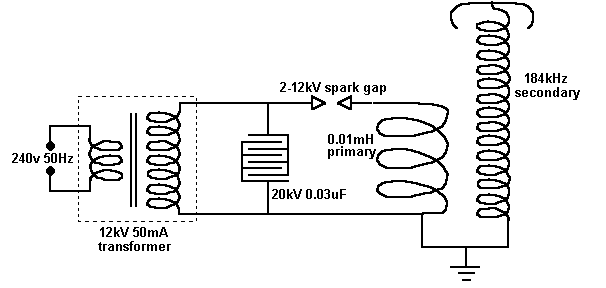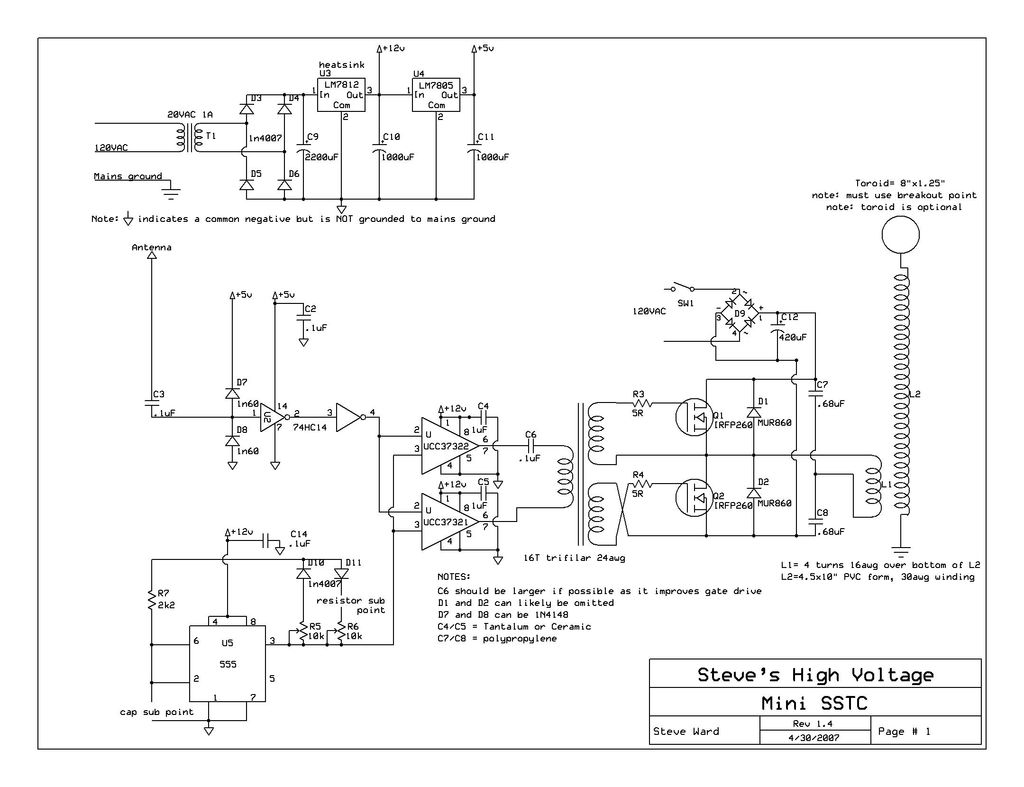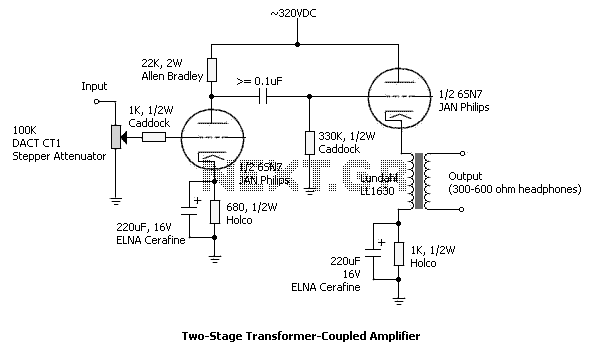
Vacuum Tube Tesla Coil (VTTC
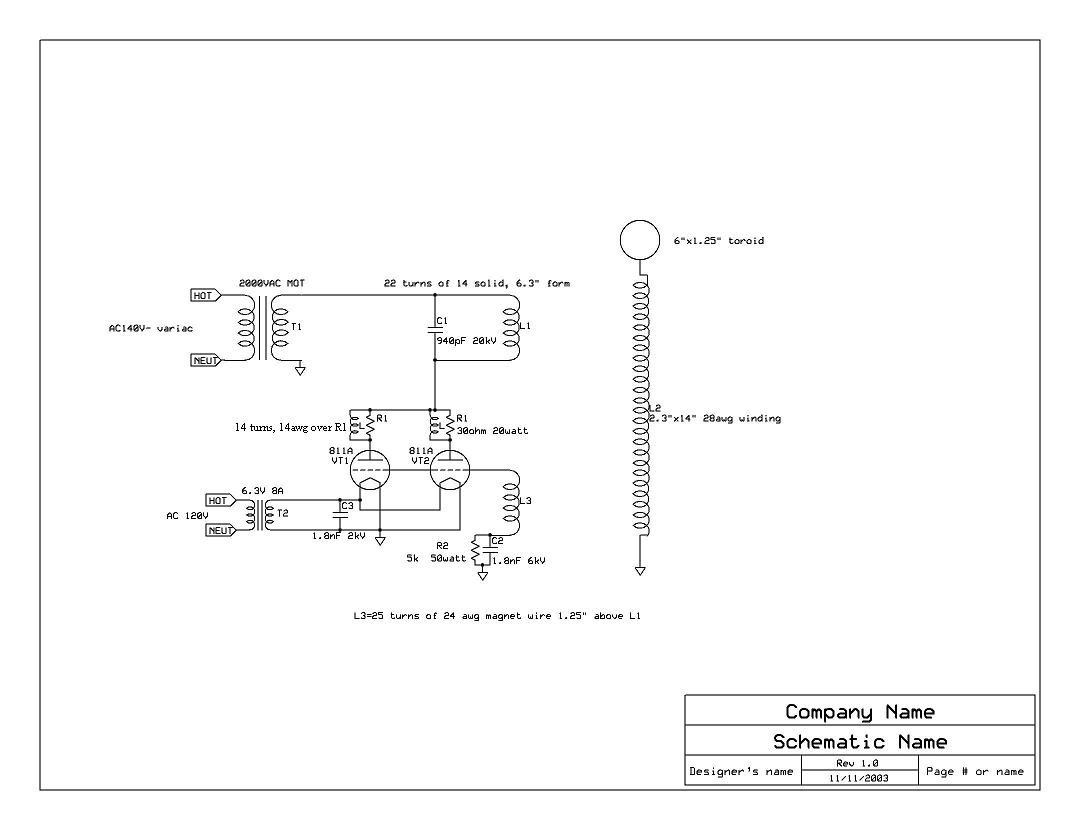
This is the specific schematic for the Tesla Coil that will be constructed. The design was created by Steve Ward.
The Tesla Coil is a resonant transformer circuit that generates high-voltage, low-current, high-frequency alternating current electricity. It operates on the principles of electromagnetic induction and resonance. The basic components of a Tesla Coil include a primary coil, a secondary coil, a power supply, a spark gap, and a capacitor.
The primary coil consists of a few turns of heavy gauge wire, which is connected to a capacitor that forms a resonant LC circuit with the coil. When the power supply is activated, the capacitor charges and discharges through the primary coil, creating a magnetic field. The secondary coil, which has many more turns of finer wire, is placed within the magnetic field of the primary coil. Due to the principle of mutual induction, the energy from the primary coil induces a voltage in the secondary coil.
The spark gap is a crucial component that allows the circuit to oscillate. It acts as a switch that opens and closes rapidly, allowing the energy stored in the capacitor to discharge into the primary coil. The frequency of oscillation is determined by the values of the capacitor and the inductance of the primary coil.
To ensure safe operation, proper insulation and grounding techniques must be employed. The high voltage generated can be dangerous, requiring careful handling and precautions. Additionally, the design can be optimized for performance by adjusting the turns ratio between the primary and secondary coils, as well as the values of the capacitor and spark gap.
Overall, the Tesla Coil is a fascinating example of electrical engineering, demonstrating principles of resonance and electromagnetic fields in action.Here is the particular schematic for the Tesla Coil that we will be building. I do not take credit for its creation - it was made by Steve Ward and yo.. 🔗 External reference
The Tesla Coil is a resonant transformer circuit that generates high-voltage, low-current, high-frequency alternating current electricity. It operates on the principles of electromagnetic induction and resonance. The basic components of a Tesla Coil include a primary coil, a secondary coil, a power supply, a spark gap, and a capacitor.
The primary coil consists of a few turns of heavy gauge wire, which is connected to a capacitor that forms a resonant LC circuit with the coil. When the power supply is activated, the capacitor charges and discharges through the primary coil, creating a magnetic field. The secondary coil, which has many more turns of finer wire, is placed within the magnetic field of the primary coil. Due to the principle of mutual induction, the energy from the primary coil induces a voltage in the secondary coil.
The spark gap is a crucial component that allows the circuit to oscillate. It acts as a switch that opens and closes rapidly, allowing the energy stored in the capacitor to discharge into the primary coil. The frequency of oscillation is determined by the values of the capacitor and the inductance of the primary coil.
To ensure safe operation, proper insulation and grounding techniques must be employed. The high voltage generated can be dangerous, requiring careful handling and precautions. Additionally, the design can be optimized for performance by adjusting the turns ratio between the primary and secondary coils, as well as the values of the capacitor and spark gap.
Overall, the Tesla Coil is a fascinating example of electrical engineering, demonstrating principles of resonance and electromagnetic fields in action.Here is the particular schematic for the Tesla Coil that we will be building. I do not take credit for its creation - it was made by Steve Ward and yo.. 🔗 External reference
